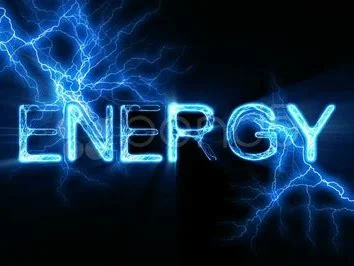Energy's Renewed Push: What This Means for Nuclear vs. Renewables
Title: The Climate Promise: Can Renewables, Efficiency, and Methane Cuts Really Save Us?
Here's the thing: climate change can feel like this overwhelming, impossible problem. We see the headlines, the dire warnings, and it’s easy to feel like we're already past the point of no return. But what if I told you there's a real, tangible reason for hope? What if the solutions aren't some far-off fantasy, but are actually within our grasp, right now?
That’s what I’m seeing coming out of the COP30 climate summit. And honestly, when I dug into the details, it gave me chills – in a good way! We're talking about a potential game-changer, a way to shave nearly a full degree Celsius off projected temperature rises this century. How? By sticking to three key promises: tripling renewable energy, doubling energy efficiency, and making substantial cuts to methane emissions.
A Glimmer of Hope in Belém
Think about it: governments have already agreed to these goals. The technology exists. The investment is starting to flow. It’s not some pipe dream; it's a matter of political will and, yes, a whole lot of hard work.
This isn't just about feel-good pledges, either. The Climate Action Tracker coalition estimates that achieving these measures among G20 countries alone would reduce global greenhouse gas emissions by a staggering 18 billion tonnes in 2035. That's enough to cut the rate of global heating by a third in the next decade and halve it by 2040. It’s like finally finding the right combination to unlock a door we thought was sealed shut.
Bill Hare, chief executive of Climate Analytics, put it perfectly: achieving this by 2035 would be a gamechanger, quickly slowing the rate of warming and lowering global warming this century from 2.6C to about 1.7C. That brings us within striking distance of the crucial 1.5C target set by the Paris climate agreement. This is the kind of breakthrough that reminds me why I got into this field in the first place.
Now, I know what some of you might be thinking. We’ve heard these promises before. What makes this time different? Well, for one thing, the momentum is building. Global investment in renewable energy has surged, outpacing investment in fossil fuels by a factor of two! China’s renewable energy sector is booming, and India has reached its solar energy goals five years ahead of schedule. It's like watching a rocket finally break free of Earth's gravity.
But, and there's always a but, right?, cutting methane emissions remains a huge challenge. More than 150 governments have signed up to the global methane pledge, promising to cut emissions by 30% by 2030. Yet, methane emissions continue to rise, and many countries are underreporting their output. Persuading countries to capture methane from oil and gas operations, or even close abandoned coalmines, is proving difficult. Russia, China, and the US are among the biggest culprits.
The good news? The technology to capture and utilize methane exists. The problem is the political will to enforce regulations and provide incentives. It's like having the keys to a treasure chest but being unwilling to unlock it.

And let's not forget about deforestation. Stopping deforestation is another crucial pledge that remains unfulfilled. Forests are vital carbon sinks, absorbing carbon dioxide from the atmosphere and balancing out our remaining greenhouse gas emissions. Protecting and restoring forests is not just an environmental imperative; it's a climate necessity.
The real question, as Hare points out, is political: can governments resist pressure from the fossil fuel industry, and will richer countries accelerate financial support for those who need it? This is where we, as citizens, have a crucial role to play. We need to hold our leaders accountable and demand action.
Niklas Höehne from the NewClimate Institute makes a compelling point: the changes in the energy system resulting from tripling renewables, doubling energy efficiency, and reducing methane would trigger the transition away from fossil fuels. He argues that these measures would lead to significant reductions in fossil fuel use by the mid-2030s, implementing the agreement to transition away from fossil fuels.
Think of it like this: imagine a giant flywheel representing the global economy. For decades, it's been spinning in one direction, powered by fossil fuels. Now, we're trying to change its direction, to spin it towards a clean energy future. It takes tremendous effort to overcome the initial inertia, but once the flywheel starts spinning in the new direction, it gains momentum, making it easier and easier to accelerate the transition.
What this means for us is a future where the air is cleaner, the energy is cheaper, and the planet is more sustainable. It means a future where our children and grandchildren can thrive. But more importantly, what could it mean for you? Imagine a world where renewable energy powers your home, where electric vehicles fill the streets, and where green jobs are abundant.
But here's the sobering truth: even with all this progress, even if we achieve these ambitious goals, we're still facing a climate crisis. The planet has already warmed by over 1 degree Celsius, and we're already seeing the devastating impacts of climate change around the world.
That's why we need to be clear-eyed about the challenges ahead. We need to be honest about the sacrifices that will be required. We need to be willing to challenge the status quo and demand bold action from our leaders. But we also need to maintain hope. Because without hope, we're lost.
It's Not Too Late to Change the Story
-

XYZ Stock: Bullish Outlook and Buybacks – What's the Catch?
Block's$5BillionBuyback:So,Wh...
-

Warren Buffett's OXY Stock Play: The Latest Drama, Buffett's Angle, and Why You Shouldn't Believe the Hype
Solet'sgetthisstraight.Occide...
-

The Great Up-Leveling: What's Happening Now and How We Step Up
Haveyoueverfeltlikeyou'redri...
-

The Business of Plasma Donation: How the Process Works and Who the Key Players Are
Theterm"plasma"suffersfromas...
-

NJ's ANCHOR Program: A Blueprint for Tax Relief, Your 2024 Payment, and What Comes Next
NewJersey'sANCHORProgramIsn't...
- Search
- Recently Published
-
- Royal Caribbean Cruise: What's Driving The Stock Surge?
- Xbox Cloud Gaming and Fortnite: What's the Catch?
- MSTR: Stock Price, Bitcoin Holdings, and Key Drivers
- Spy Allegations: China vs. Philippines and the Reactions
- ETH6900: Vitalik's Meme Coin Dump and the Aftermath
- Shameless Accusations: What We Know and the Fallout
- NVDA Stock Surge: Revenue Beats Expectations and the Bullish Outlook – What Reddit is Saying
- IEA Report: Global Appetite vs. AI Impact
- Binance Under Scrutiny: Trump Pardon Controversy and Illicit Crypto Flows
- Target Stock Plunge: Earnings Guidance vs. Market Reaction
- Tag list
-
- carbon trading (2)
- Blockchain (11)
- Decentralization (5)
- Smart Contracts (4)
- Cryptocurrency (26)
- DeFi (5)
- Bitcoin (29)
- Trump (5)
- Ethereum (8)
- Pudgy Penguins (5)
- NFT (5)
- Solana (5)
- cryptocurrency (6)
- XRP (3)
- Airdrop (3)
- MicroStrategy (3)
- Stablecoin (3)
- Digital Assets (3)
- PENGU (3)
- Plasma (5)
- Zcash (5)
- Aster (4)
- investment advisor (4)
- crypto exchange binance (3)
- SX Network (3)
